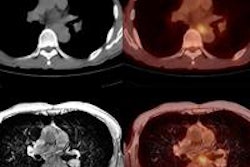Adverse reactions due to radiopharmaceuticals remained the same from 2007 to 2011, despite an increase in the number of PET exams during those five years, according to a study published online May 29 in the Journal of Nuclear Medicine.
The incidence of adverse events was 2.1 per 100,000 radiopharmaceutical administrations, with no reported hospitalizations or deaths during the five-year study period, reported study author Dr. Edward Silberstein, professor of radiology at the University of Cincinnati College of Medicine. The number has remained essentially the same for two decades, ranging from 2.1 to 2.3 events per 100,000 injections (JNM, May 29, 2014).
Fifteen academic institutions submitted quarterly reports of radiopharmaceutical use and adverse events for the study, but only 11 participants contributed data for all five years.
Silberstein tallied 1.01 million radiopharmaceutical injections, which included 803,696 diagnostic non-PET administrations (79.5%), 207,281 diagnostic PET administrations (20.5%), and 13,200 therapeutic injections (1.3%). In addition, 112,830 adjunctive nonradioactive pharmaceutical administrations were reported.
There was a significant increase in PET studies over the five-year period, from 17% of all diagnostic studies in 2007 to 26% in 2011. PET with FDG as a percentage of total PET scans decreased from 85% in 2007 to 80% in 2011, but the difference was not statistically significant.
The number of procedures per institution increased slightly over the study period, from 16,533 in 2007 to 16,753 in 2011. The percentage of annual therapeutic procedures ranged from 1.2% of the total in 2007 to 1.5% in 2010, but there was no trend suggesting significantly increasing or decreasing numbers.
Silberstein noted a 2012 study from Korea that suggested the number of bone scintigraphy studies could decrease, given FDG-PET's ability to detect tumor in marrow before the cancer reaches the cortex (Annals of Nuclear Medicine, September 2012, Vol. 26:8, pp. 627-633).
However, Silberstein found that the number of bone scintigraphy procedures remained stable during the study period, despite an increase in PET studies.
"Other [F-18-labeled] radiopharmaceuticals came into use (e.g., [F-18] sodium fluoride), potentially reducing the percentage of PET studies performed with [F-18 FDG-PET], but the occurrence of this small change was not statistically significant," he wrote.



















